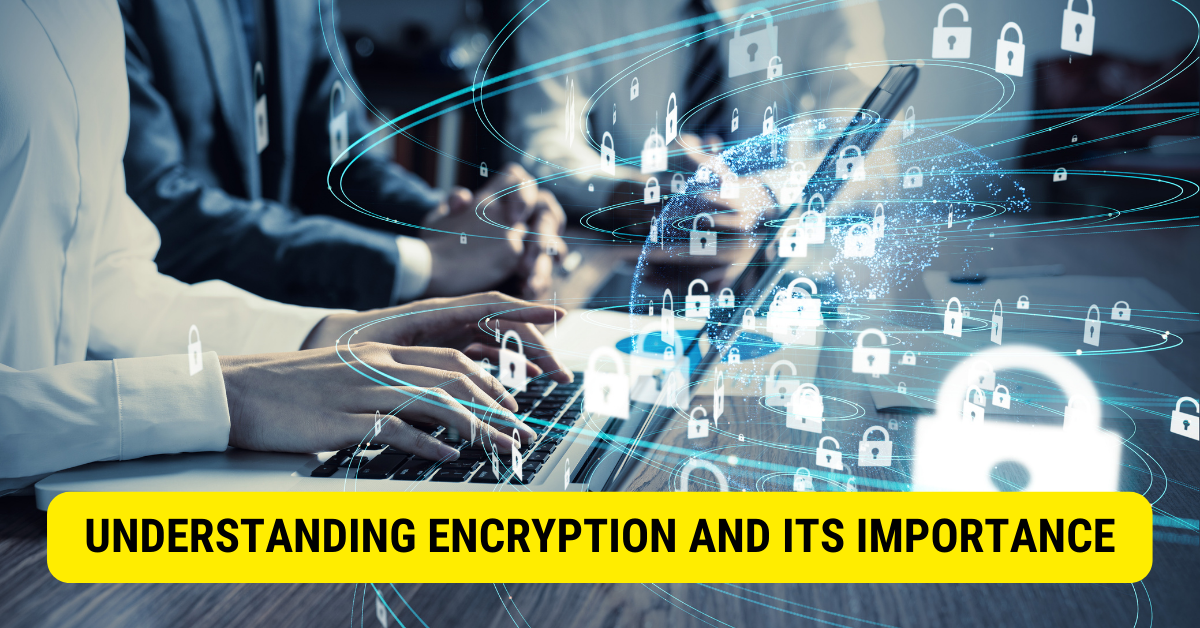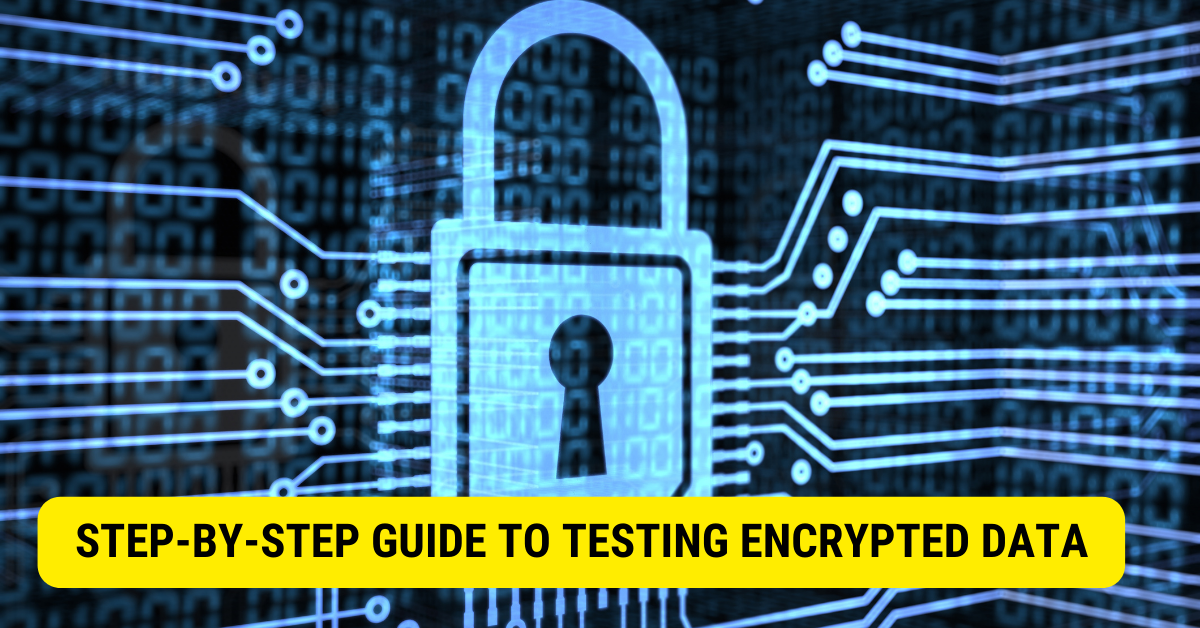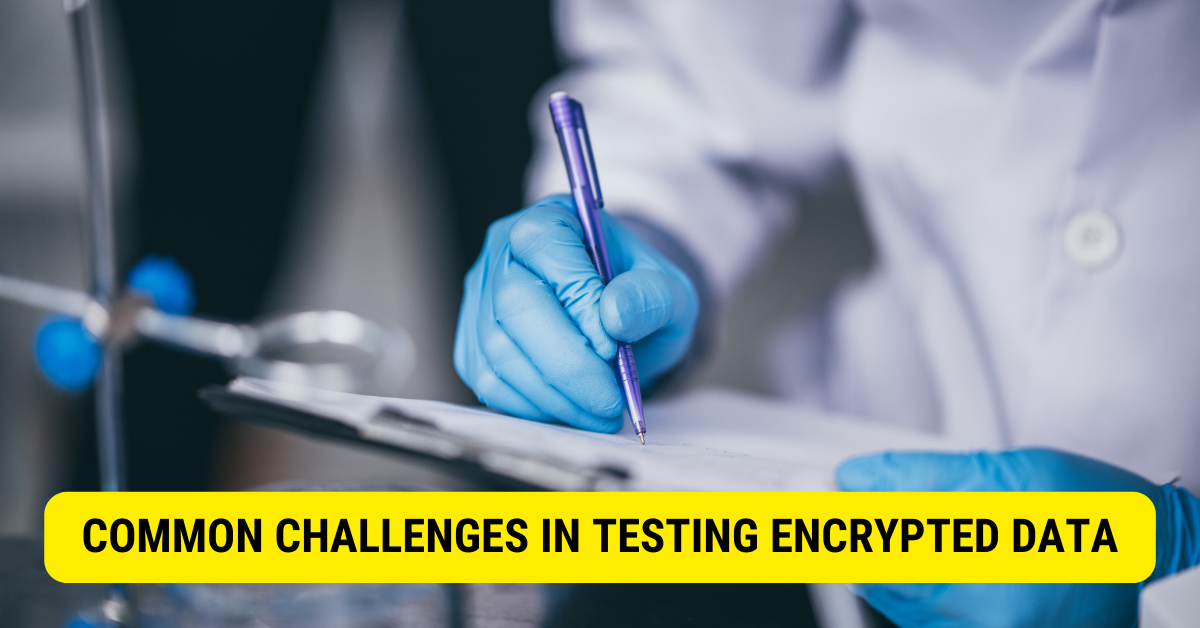To assess the effectiveness of your encryption system, you can utilize various tools designed for this purpose. These tools are specifically designed to evaluate the strength of encryption algorithms and the security of your system’s encrypted data.
- Cipher Strength Evaluation
- Key Management Assessment
- Testing Encryption-Related Controls and Policies
- Penetration Testing (Ethical Hacking)
- Cryptographic Analysis
Understanding Encryption and Its Importance

In today’s digital age, where data is constantly being transmitted and stored, the need for robust security measures has become more critical than ever. One such security measure that plays a vital role in safeguarding sensitive information is encryption.
Encryption is simply transforming data into an unreadable form using an encryption algorithm. The encrypted data can only be decrypted and accessed with a corresponding decryption key. This ensures that even if an unauthorized person gains access to the data, they cannot make sense of it.
Encryption is essential for protecting sensitive information such as personal details, financial data, and intellectual property. It protects against data breaches, identity theft, and unauthorized access. Without encryption, our data would be vulnerable to exploitation and misuse.
What is Encryption?
Encryption is a method to secure data by converting it into an unreadable format. It involves using mathematical algorithms to scramble the data, making it unintelligible to unauthorized users. The encrypted data can only be decrypted with the corresponding decryption key.
There are two main types of encryption: symmetric encryption and asymmetric encryption. Symmetric encryption uses a single key to both encrypt and decrypt the data. This key must be kept secret and shared securely between the sender and the recipient. On the other hand, asymmetric encryption uses a pair of keys: a public key for encryption and a private key for decryption. The public key can be freely shared, while the private key must be kept secret.
Encryption algorithms play a crucial role in the encryption process. These algorithms determine how the data is scrambled and the strength of the encryption. Various encryption algorithms are available, each with its own level of security and complexity. Some commonly used encryption algorithms include Advanced Encryption Standard (AES), RSA, and Triple Data Encryption Standard (3DES).
Why is Testing Encrypted Data Necessary?
While encryption provides a strong layer of security, it is not foolproof. Testing encrypted data is necessary to ensure the effectiveness and reliability of encryption mechanisms. It helps identify the encryption system’s vulnerabilities, weaknesses, and potential loopholes.
Testing the encrypted data ensures that it can withstand various attacks and attempts to breach its security. It involves subjecting the encryption process and implementation to rigorous testing scenarios. This includes testing for known vulnerabilities, brute-force attacks, and other potential threats.
By thoroughly testing the encryption process and implementation, organizations can ensure their data’s confidentiality, integrity, and availability. It helps them identify weaknesses in their encryption mechanisms and take necessary steps to strengthen their security posture. Regular testing lets organizations stay updated with the latest encryption standards and best practices.
In conclusion, encryption is a vital component of data security. It protects sensitive information from unauthorized access and ensures the privacy and integrity of our data. Understanding encryption and regularly testing encrypted data can strengthen our defenses against cyber threats and safeguard our valuable information.
Preparing for Encrypted Data Testing
Before diving into the testing process, it is crucial to set up the testing environment and gain a comprehensive understanding of the types of encrypted data.
Setting up a suitable testing environment involves installing the necessary tools and software. It requires careful consideration of the infrastructure needed for effective and reliable testing. This includes configuring servers, networks, and storage systems to mimic the production environment closely. By replicating the real-world scenarios, the testing environment can provide accurate results and identify potential issues that may arise in the deployment.
Furthermore, creating a testing environment that mirrors the production environment helps evaluate the encryption mechanism’s performance and scalability. It allows testers to gauge how the encryption process affects the overall system and whether it can handle the expected workload and user traffic.
Once the testing environment is set up, it is important to test the encryption process using various scenarios. This includes simulating different devices, networks, and user behaviors. By doing so, testers can ensure the effectiveness and compatibility of the encryption mechanism under different circumstances. For example, testing the encryption process on mobile and desktop devices can help identify device-specific issues that may affect the encryption and decryption process.
Understanding the Types of Encrypted Data
There are various types of encrypted data, each with specific characteristics and requirements. Understanding these types of encrypted data is vital for conducting accurate and relevant testing.
File-Level Encryption
One common type of encrypted data is file-level encryption. This involves encrypting individual files to ensure their confidentiality and integrity. File-level encryption is often used to protect sensitive documents, such as financial records or personal information. Testing this type of encryption involves verifying the encryption and decryption process for different file formats and sizes.
File-Level Encryption
Another type of encrypted data is database encryption. In this case, the encryption is applied to the entire database or specific fields. Database encryption helps protect sensitive information stored in databases, such as customer records or financial transactions. Testing database encryption involves validating the encryption and decryption process for different database management systems and ensuring that the encrypted data remains accessible to authorized users.
Email Encryption
Email encryption is yet another type of encrypted data. It involves encrypting email messages to prevent unauthorized access to the content. Testing email encryption requires verifying the encryption and decryption process for different email clients and ensuring the intended recipients can properly decrypt the encrypted messages.
Network Encryption
Lastly, network encryption is a type of encryption that secures data transmitted over a network. It ensures that the data remains confidential and cannot be intercepted by unauthorized parties. Testing network encryption involves evaluating the encryption and decryption process for different network protocols and ensuring that the encrypted data can be transmitted and received without any loss or corruption.
Step-by-Step Guide to Testing Encrypted Data

Now that the testing environment is set up and there is a clear understanding of the types of encrypted data, it’s time to delve into the step-by-step process of testing encrypted data.
Identifying the Data to Test
The first step in testing encrypted data is to identify the specific data that needs to be tested. This includes determining the test’s scope, including the data’s size, the encryption algorithms used, and any specific requirements or constraints.
Choosing a representative sample of data for testing is crucial, ensuring that it covers a wide range of scenarios and sensitive information. This will help uncover any potential vulnerabilities or weaknesses in the encryption system.
For example, in a healthcare setting, the data to be tested could include patient medical records, billing information, and personal identification numbers. By selecting a diverse data set, the testing process can thoroughly evaluate the security measures in place and identify any areas of improvement.
Implementing the Testing Process
Once the data to be tested is identified, the actual testing process begins. This involves executing various tests and scenarios to assess the effectiveness and reliability of the encryption mechanism.
Testing can include attempts to decrypt the data without the appropriate decryption key, testing the system’s ability to detect and respond to unauthorized access attempts, and assessing the system’s performance under different loads and stress levels.
For instance, a simulated attack may be conducted during the testing process to determine if the encryption system can withstand hacking attempts. This could involve employing penetration testing techniques to identify system defense vulnerabilities.
In addition, the testing process may also involve evaluating the encryption system’s compatibility with different devices and operating systems. This is important as it ensures the data remains secure regardless of the platform used.
Analyzing the Test Results
After conducting the tests, it is important to analyze the results in detail. This includes identifying any vulnerabilities, weaknesses, or areas of improvement in the encryption system.
The test results should be carefully documented and analyzed to gain insights into the system’s performance, strengths, and areas requiring further attention. This analysis will help fine-tune the encryption mechanism and enhance the overall data security.
For example, suppose the test results reveal that the encryption system is vulnerable to a specific type of attack, such as a brute-force attack. In that case, additional measures can be implemented to strengthen the system’s defenses against such threats.
Furthermore, the test results analysis may also involve evaluating the impact of encryption on system performance. It is important to balance data security and system efficiency, ensuring the encryption process does not significantly hinder the system’s functionality.
Overall, the test results analysis is crucial in refining the encryption system, addressing any identified weaknesses, and ensuring the data remains secure in the face of evolving threats.
Techniques Used to Test Encrypted Data
Testing encrypted data is crucial to ensure the effectiveness and reliability of encryption mechanisms. It helps identify the encryption system’s vulnerabilities, weaknesses, and potential loopholes. In this section, we will explore some common techniques used to test encrypted data and how to use them effectively:
-
Cipher Strength Evaluation
- Analyze the strength and security of the encryption algorithm used. Assess its resistance against known attacks and vulnerabilities.
- Test the encryption algorithm using a range of inputs, including various data sizes, formats, and scenarios.
- Verify that the encryption algorithm provides sufficient cryptographic strength to protect the data.
-
Key Management Assessment
- Evaluate the key management practices, including key generation, distribution, storage, and rotation.
- Test the security of key management systems by simulating attacks to identify vulnerabilities or weaknesses.
- Verify that encryption keys are appropriately protected and only accessible to authorized individuals.
-
Validation of Encryption in Different Scenarios
- Test encryption at rest, in transit, and during processing to ensure data remains secure throughout its lifecycle.
- Verify the encryption process for different storage systems, network protocols, and application layers.
- Assess the encryption’s compatibility and effectiveness across various platforms, devices, and operating systems.
-
Testing Encryption-Related Controls and Policies
- Evaluate the effectiveness of access controls, authentication mechanisms, and encryption-related policies.
- Test the system’s ability to detect and respond to unauthorized access attempts or security breaches.
- Assess the implementation of encryption-related best practices, such as data loss prevention (DLP) policies and secure data disposal procedures.
-
Performance Testing
- Measure the performance impact of encryption on system resources, such as processing speed, memory usage, and network latency.
- Evaluate how encryption affects the overall system performance under different loads and stress levels.
- Optimize encryption algorithms or configurations to achieve a balance between security and system efficiency.
-
Penetration Testing (Ethical Hacking)
- Simulate real-world attacks to identify vulnerabilities in the encryption implementation.
- Attempt to bypass or compromise the encryption through various attack techniques, such as brute force, dictionary attacks, or man-in-the-middle attacks.
- Penetration testing provides valuable insights into the security posture of the encrypted system and helps prioritize security improvements.
-
Cryptographic Analysis
- Conduct an in-depth analysis of the cryptographic algorithms, protocols, and implementations used.
- Evaluate the mathematical soundness, randomness, and robustness of cryptographic functions.
- Assess the resistance against known cryptographic attacks and weaknesses, such as chosen-plaintext or side-channel attacks.
How To Effectively Use Testing Techniques?
To effectively use the testing techniques, consider the following steps:
Define Clear Objectives
Define the objectives and scope of the testing process, including the specific aspects of encryption to be evaluated.
Select Appropriate Tools
Choose suitable tools and frameworks that align with the testing objectives and techniques. Examples include OpenSSL, Nessus, Wireshark, Burp Suite, or CrypTool.
Create Test Data Sets
Generate or obtain representative test data sets that mimic real-world scenarios and cover various data types, formats, and sizes.
Execute Testing Procedures
Execute the chosen testing techniques, following established methodologies and best practices. Document the process thoroughly and record the results.
Analyze Test Results
Analyze the results systematically, identifying any vulnerabilities, weaknesses, or areas requiring improvement. Document and prioritize the findings based on their severity and potential impact.
Implement Remediation Measures
Collaborate with development and security teams to address the identified vulnerabilities and weaknesses. Implement appropriate measures, such as updating encryption algorithms, applying patches, or improving system configurations.
By applying these techniques and following the steps outlined, organizations can effectively test their encrypted data, identify potential vulnerabilities, and strengthen their encryption mechanisms to ensure the security and integrity of their sensitive information.
Common Challenges in Testing Encrypted Data

Testing encrypted data can present various challenges, especially when dealing with complex encryption algorithms and addressing data privacy issues.
Dealing with Complex Encryption Algorithms
Complex encryption algorithms can pose challenges during testing due to their intricate nature. These algorithms require in-depth knowledge and expertise for effective testing and analysis.
Testing complex encryption algorithms may involve rigorous mathematical calculations and simulations. It is crucial to have skilled professionals who understand the intricacies of the algorithms to ensure accurate testing and assessment of the encryption system.
Overcoming Data Privacy Issues
When testing encrypted data, it is important to ensure data privacy and confidentiality. This includes maintaining the confidentiality of the data being tested and complying with privacy regulations and standards.
Data privacy issues can arise when using real data for testing purposes. Organizations can overcome this challenge by using synthetic data or anonymizing the original data while preserving its essential characteristics.
Best Practices for Testing Encrypted Data
Organizations should follow certain best practices to ensure reliable and effective testing of encrypted data.
Ensuring Data Integrity
Data integrity is crucial for maintaining the accuracy and reliability of the encrypted data. Organizations should implement measures to verify the integrity of the data before and after the encryption process.
Integrity checks, such as checksums or digital signatures, can help detect any unauthorized modifications or tampering with the data. Regularly checking data integrity enhances the overall security and reliability of the encryption system.
Maintaining Confidentiality and Privacy
While testing encrypted data, it is essential to maintain the confidentiality and privacy of the data. Organizations should adopt practices to ensure that the data used for testing is adequately protected and does not fall into the wrong hands.
This can include implementing access controls, encryption for the test data, and strictly limiting access to authorized personnel. Maintaining confidentiality and privacy during testing helps prevent unintentional data breaches or exposures.
Key Takeaways
- Testing encrypted data involves verifying the integrity and security of the encryption process.
- The testing process ensures the encryption algorithm and key management are properly implemented.
- Test scenarios should cover encryption at rest, in transit, and during processing.
- Testing should include verifying the encrypted data’s confidentiality, integrity, and availability.
- Thoroughly test encryption key generation, storage, and rotation procedures.
- Use test data sets to validate encryption and decryption processes.
- Employ specialized testing tools and techniques designed for cryptographic evaluation.
- Regularly review and update the encryption testing process as new vulnerabilities or cryptographic algorithms are discovered.
FAQs:
Why is testing encrypted data important?
Testing encrypted data is crucial to ensure the security and integrity of sensitive information. It helps identify vulnerabilities, misconfigurations, or implementation errors that could compromise the effectiveness of encryption mechanisms.
What are some common encryption testing techniques?
Common encryption testing techniques include cipher strength evaluation, key management assessment, encryption validation in different scenarios (at rest, in transit, during processing), and testing encryption-related controls and policies.
Are there any specific tools available for testing encrypted data?
Yes, several tools are available for testing encrypted data, such as OpenSSL, Nessus, Wireshark, Burp Suite, and CrypTool. These tools aid in evaluating the encryption algorithms, key management, and overall security of encrypted data.
Conclusion
By following these best practices, organizations can guarantee that their encrypted data is tested thoroughly and securely, providing robust protection against potential security risks and threats. Testing encrypted data is essential to assess the effectiveness and reliability of encryption mechanisms. Various techniques can be used for cipher strength evaluation, key management assessment, encryption-related controls and policies testing, penetration testing, and cryptographic analysis. Organizations can strengthen their encryption mechanisms, ensure data security, and safeguard sensitive information by implementing appropriate testing tools, creating representative test data sets, and analyzing the test results.
